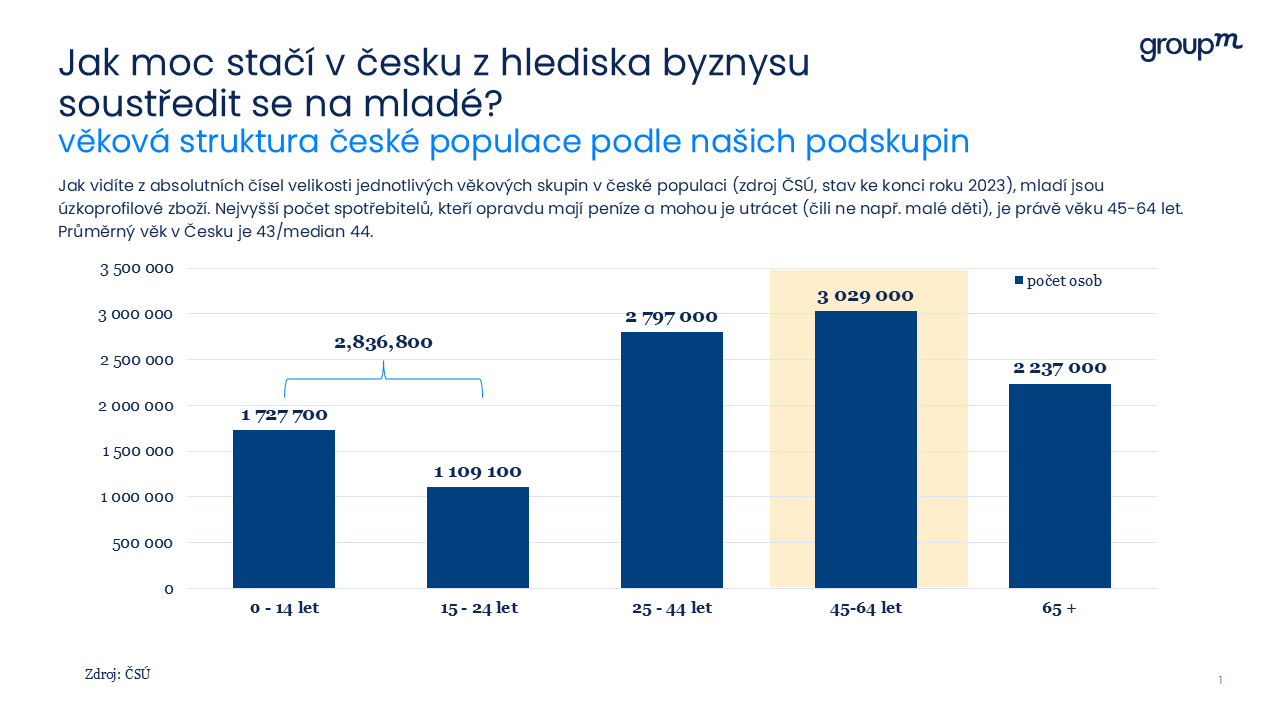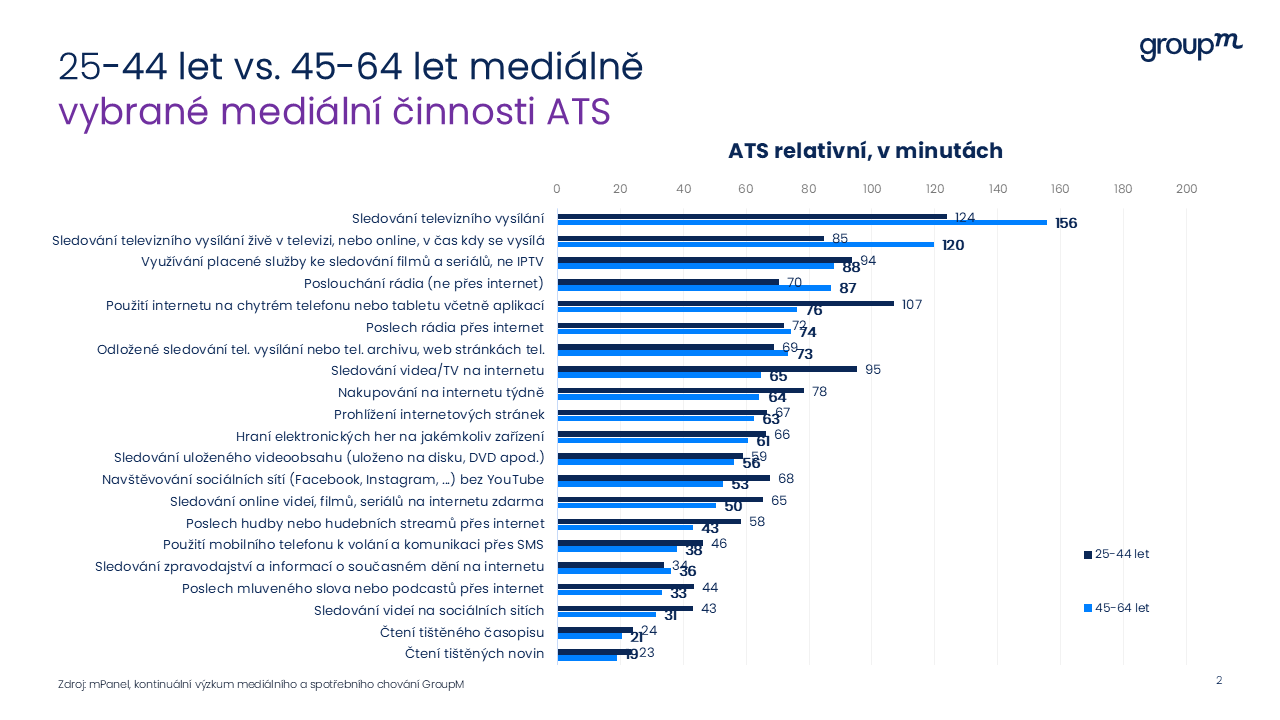At the age of 45-64 in the Czech Republic, we find 3 million consumers who are definitely not preparing for a life of austerity or resigning their dreams and desires.
If we divide the Czech population by age into age subgroups, we get the following figures:
 Source: ČSÚ (Czech Statistical Office)
Source: ČSÚ (Czech Statistical Office)We have about 1.1 million cool young people (with children up to 14 years of age it would be 2.8 million). I think we can agree that these are the ones that marketing focuses on very intensely. The second favourite group of Czechs in marketing is 2.8 million people aged 25-44.
However, the largest age group in the Czech Republic is people aged 45-64, and they are mostly invisible from a marketing perspective. Let’s leave aside the advertisements for various health problems and their solutions, which imply that this age group does not solve anything else. While younger Czechs, according to the ads, have a lot of (even perhaps delusional) aspirations, there is a turning point after the age of 45 where everything seems to vanish.
The days of work-and-life-worn forty- and fifty-somethings are long gone. With a little effort, one can see that even these people live active lives full of dreams, wishes, plans and aspirations. But in the “Czechs 45 Plus” project we don’t want to rely on impressions alone. We aim to show you through data that neglecting this target group simply doesn’t make economic sense.
Follow the money
A common reason for neglecting this group is the assumption that people in this age simply consume less and perhaps don’t have the finances. However, nothing could be further from the truth. The hard data suggests that if there is money and assets (mostly unencumbered by debt such as mortgages) anywhere in Czech society, it is in the 45-64 age group.
If we look at the number of earners per household and who the finances are intended for, a comparison between Czechs aged 45-64 and those aged 25-44 reveals interesting insights. In terms of the number of earners per household, these are quite comparable groups. In both, 50% of households have two earners, and 30% (for those aged 25-44) or 32% (for those aged 45-64) have just one earner. However, there’s a catch in it. While only 39% of households for younger Czechs up to 44 years are two-person households, in the 45-64 age group, this percentage rises to 55%.
If we look at the means, for each household with Czechs aged 45-64, there are 1.59 economically active persons per household, and the mean household size is 2.56. For younger Czechs aged 25-44, these figures are 1.55 and 2.93, respectively. It doesn’t require much math to see that older Czechs, on average, have higher disposable income per person than their younger counterparts. And it’s certainly not groundbreaking to point out that careers are built over time and pay (usually) grows with age and experience.
On our project’s webpage (cesi45plus.cz), you can see that this age group not only takes care of themselves but also shows little to no significant differences when you look category by category—from FMCG to durable goods—compared to the popular target group of 25-44 years old. Naturally, there are differences related to life changes, such as when children grow up, but there aren’t many of these.
You can reach them through media more easily, but the relevance of the message is a challenge
The good news in the whole sad story of the forgotten target group is that it is actually easier to reach them. They watch more TV and aren’t as fragmented between the many online platforms. On the other hand, as you can see from the average daily ATS for individual touchpoints, they are not that far behind younger ones for most of them.
ATS relative in minutes per day (declared):
 Source: mPanel
Source: mPanelWhat are the takeaways?
Czechs aged 45-64 are financially more affluent than their younger counterparts, with 90% still economically active. People in this age group also have aspirations and dreams, and truth be told, they finally have the financial means to pursue them. They also have a clearer understanding of what they want and how they want to live.
Of course, Czechs aged 45-64 generally have well-established preferences and experience and are somewhat “seasoned” by years of exposure to marketing and advertising. Most won’t eagerly jump at the first hook you throw their way. This makes them a slightly more challenging target group to engage with. However, on the other side, they tend to be significantly more loyal to brands they like and trust compared to younger Czechs. Thinking you can reach them as a side effect of targeting younger audiences may hold some truth in terms of pure reach, but definitely not when it comes to relevance and the effectiveness of such communication.
For more information, visit cesi45plus.cz.

